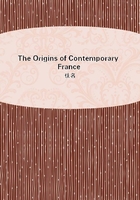
第1176章
When Napoleon built his University he did it as a statesman and a man of business, with the foresight of a contractor and a practical man, calculating outlay and receipts, means and resources, so as to produce at once and with the least expense, the military and civil tools which he lacked and of which he always had too few because he consumed too many: to this precise, definite purpose he subjected and subordinated all the rest, including the theory of the educational State; she was for him simply a résumé, a formula, a setting. On the contrary, for the old Jacobins, she was an axiom, a principle, an article in the Social Contract; by this contract, the State had charge of public education; it had the right and its duty was to undertake this and manage it. The principle being laid down, as convinced theorists and blindly following the deductive method, the derived consequences from it and rushed ahead, with eyes shut, into practical operation, with as much haste as vigor, without concerning themselves with the nature of human materials, of surrounding realities, of available resources, of collateral effects, nor of the total and final effect. Likewise with the new Jacobins of the present day, according to them, since instruction is a good thing,[86] the broader and deeper it is the better; since broad and deep instruction is very good, the State should, with all its energy and by every means in its power, inculcate it on the greatest possible number of children, boys and adolescents.
Such, henceforth, is the word of command from on high, transmitted down to the three stages of superior, secondary and primary instruction.[87]
Consequently, from 1876 to 1890,[88] the State expends for superior instruction, in buildings alone, 99,000,000 francs. Formerly, the receipts of the Faculties about covered their expenses; at the present day, the State allows them annually 6,000,000 francs more than their receipts. It has founded and supports 221 new (professional) chairs, 168 complementary courses of lectures, 129 conférences and, to supply the attendants, it provides, since 1877, 300 scholarships for those preparing for the license and, since 1881, 200 scholarships for those preparing for the aggrégation. Similarly, in secondary instruction, instead of 81 lycées in 1876, it has 100 in 1887[89]; instead of 3,820scholarships in 1876, it distributes, in 1887, 10,528; instead of 2,200,000 francs expended for this branch of instruction in 1857, it expends 18,000,000 in 1889. - This overload of teaching caused overloaded exams: it was necessary to include more science than in the past to curriculum of the grades delivered and determined by the State. "This was what was then done whenever possible."[90]
Naturally, and through contagion, the obligation of possessing more knowledge descended to secondary instruction. In effect, after this date, we see neo-Kantian philosophy descending like hail from the highest metaphysical ether down upon the pupils in the terminal class of the lycées, to the lasting injury of the seventeen-year old brains.
Again, after this date, we see in the class of special mathematics[91]
an abundance of complicated, confusing problems so that, today, the candidate for the Polytechnic School must, to gain admission, expound theorems that were only mastered by his father after he got there. -Hence, "boxes" and "ovens", private internats, the preparatory secular or ecclesiastical schools and other "scholastic cramming-machines";hence, the prolonged mechanical effort to introduce into each intellectual sponge all the scientific fluid it can contain, even to saturation, and maintain it in this extreme state of perfection if only for two hours during an examination, after which it may rapidly subside and shrink. Hence, that mistaken use, that inordinate expenditure, that precocious waste of mental energy, and that entire pernicious system which overburden for a substantial period the young, not for their advantage, but, on reaching maturity, to their intellectual detriment.
To reach the uncultivated masses, to address popular intellect and imagination, one must use absolute, simple slogans. In the matter of primary instruction, the simplest and most absolute slogan is that which promises and offers it to all children, boys and girls, not merely universal, but again, complete and gratuitous. To this end, from 1878 to 1891,[92] the State has expended for school buildings and installations 582,000,000 francs; for salaries and other expenses it furnished the latter year 131,000,000. Somebody pays for all this, and it is the tax-payer, and by force; aided by gendarmes, the collector puts his hand forcibly into all pockets, even those containing only sous, and withdraws these millions. Gratuitous instruction sounds well and seems to designate a veritable gift, a present from the great vague personage called the State, and whom the general public dimly sees on the distant horizon as a superior, independent being, and hence a possible benefactor. In reality, his presents are made with our money, while his generosity consists in the fine name with which he here gilds his fiscal exactions, a new constraint added to so many others which he imposes on us and which we endure.[93] - Besides, through instinct and tradition, the State is naturally inclined to multiply constraints, and this time there is no concealment. From six to thirteen years of age, primary instruction becomes obligatory.[94]